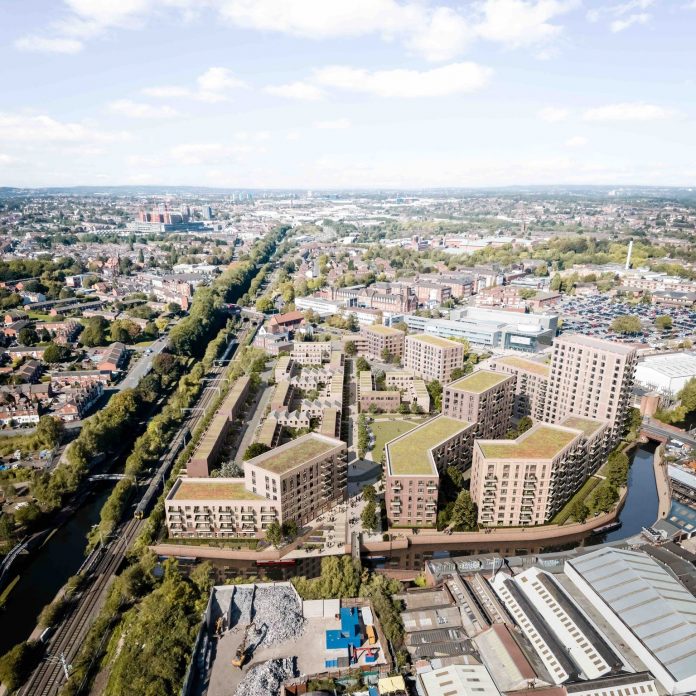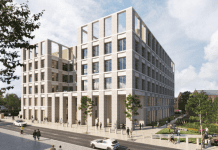Galliard Homes and Apsley House Capital’s proposed £165m Soho Wharf scheme at Soho Loop was given the go-ahead by Birmingham City Council’s planning chiefs
The approval paves the way for the Soho Wharf urban regeneration scheme, which will comprise 102 two and three-bedroom townhouses and 650 one and two-bedroom apartments, more than 10,000 sq ft of commercial space, new public realm, parks and gardens, and shared amenity spaces.
New pedestrian, cycle and vehicle routes will also be created to enable public access through the site, with a new canal bridge connecting the area with the existing towpath to provide a direct route into the city centre.
A public waterfront space will make the most of the scheme’s canal-side location.
The Soho Wharf scheme
Called Soho Wharf, the scheme has been designed by Claridge Architects, which worked with the JV partnership on its Timber Yard development in Southside.
Stephen Conway, executive chairman of Galliard Homes, commented: “Our vision for Soho Wharf is to deliver a residential-led, mixed-use scheme that will be truly transformative for Birmingham. We are pleased the council shares our vision for the site.
“The approved scheme forms part of the Greater Icknield Masterplan, the largest brownfield housing-led redevelopment framework within Birmingham and is therefore strategically important for the long-term regeneration of the area, which is already undergoing major change.
“Soho Wharf is the next big development opportunity and with planning now in place we’re excited to be bringing the project forward and helping the council achieve its ambition of creating more homes and attractive places to live for the people of Birmingham.”
Site heritage
Historically, the site was partially occupied by a large glasshouse in the late 18th century and was known as Park Glass House. The building was constructed by local glasscutter Isaac Hawker to store and transport his glass products along the canal. The glassworks were demolished in the 1870s and replaced by silverworks.
As part of Birmingham’s expansion throughout the 19th and 20th century, the site and surrounding area were redeveloped with various industrial and residential properties.
Robin Norstrom, director of Apsley House Capital, said: “Throughout history, the site has played an important part in the development of the city, through the provision of jobs at the factories and the homes that once occupied the site.
“Strategically located between Edgbaston and Jewellery Quarter, Soho Wharf will be the start of a new chapter, bringing the site back to life and enhancing the local area with a design-led urban scheme that provides a mix of homes, commercial space, amenities and public realm.”
Work on Soho Wharf will begin immediately.

















